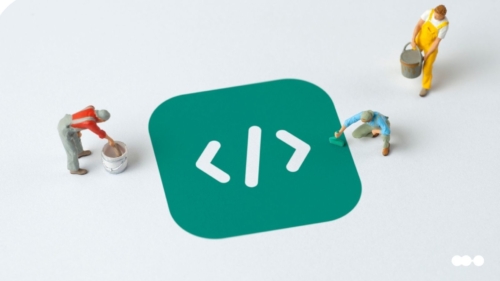
Stack extensibility might not be the first thing that comes to mind when you think of Business Process Automation (BPA). After all, process automation tools are usually thought of as a means to increase efficiency and productivity. While BPA does deliver these benefits, it can also pave a path to cost optimization by helping IT teams get more from their existing tech stacks, a benefit referred to as “stack extensibility.”
What is stack extensibility?
Stack extensibility is the capacity to do more with components of the existing stack. The problem facing many businesses – and their IT teams – is that there’s a gap between what the current stack can do and what it should do. This is usually the result of rapidly changing business demands.
For example, new compliance requirements may be introduced, or a problem with an existing process might be uncovered. When situations like these arise, IT teams have to choose between adding a new component to the stack or hand coding a solution, which takes time and effort away from other priorities. If either of these solutions takes too long, business teams may become frustrated and resort to ad hoc workarounds or shadow IT.
Each time a new tool is added to the existing stack, the total cost of ownership increases. That’s because each new tool can bring additional licensing, maintenance, and third-party costs. To avoid stack sprawl and optimize costs, many IT teams are using business process automation (BPA) tools instead.
The Definitive Guide to Business Process Automation

What is BPA?
Business process automation (BPA) tools are used to build, automate, deploy, and manage many different types of workflows and processes. No-code BPA tools are designed for use by non-technical users, in order to give business teams more autonomy and to conserve IT resources. BPA tools integrate with the existing stack components to remove collaboration and data silos and to reduce process friction.
What BPA means for IT teams
The Market Guide to BPA Tools from Gartner™ describes BPA as software that can be used to build and automate workflows, enable end-to-end process automation, deliver service and case management, and provide an orchestration (or choreography) layer for complex processes.
What this means for IT is that BPA tools possess an innate adaptability that makes it ideal for any type of process or workflow, now and in the future. In other words, BPA tools can help contain stack sprawl and the costs that come with it by eliminating the need to add a new app or system for each team, department, or process.
BPA tools that use a no-code interface and AI provide additional benefits for IT. These features give the business line more autonomy so that they can build, automate, and manage more workflows and processes on their own. That reduces the IT backlog and frees up more time for other priorities like security, strategy, and innovation.






